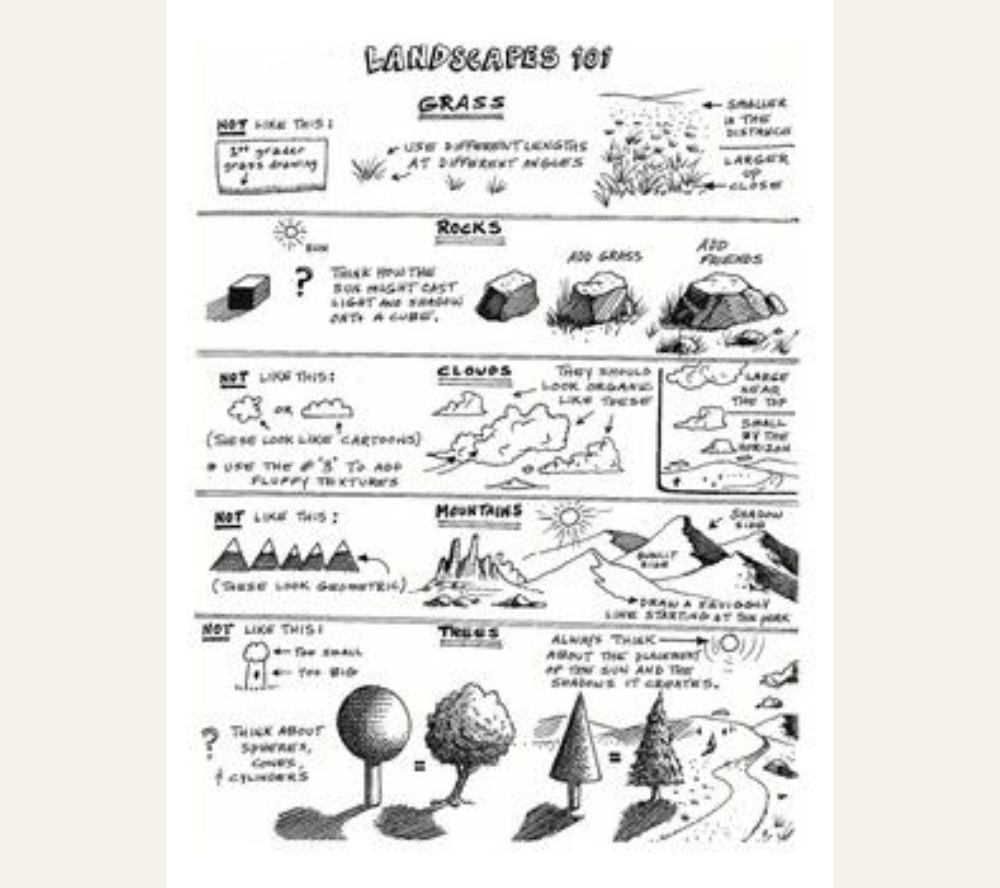This image is a drawing guide titled “Landscapes 101”, offering simple but effective tips for improving landscape sketches. It uses humorous “not like this” vs. “do this instead” comparisons to teach better techniques.

✏️ Key Drawing Tips from “Landscapes 101”
1. Grass
-
❌ Don’t draw grass with repetitive, upright lines.
-
✅ Vary textures and angles; make grass larger in the foreground and smaller in the background to show depth.
2. Rocks
-
❌ Avoid simple, boxy “rock” shapes.
-
✅ Think in 3D forms, use shading, add cracks and rough textures, and integrate them into the terrain (not floating on grass).
3. Clouds
-
❌ Don’t make perfect cotton balls.
-
✅ Draw clouds as irregular forms with variation. Use line thickness and shading to give them volume and softness.
4. Mountains
-
❌ Avoid pyramid-like shapes.
-
✅ Use triangular shapes with jagged edges, shading on one side for depth, and overlap peaks to create realism.
5. Trees
-
❌ Avoid lollipop-style trees (circle on a stick).
-
✅ Think of trees as built from cones, spheres, and cylinders. Add texture, variation, and use clusters to show a forest.
🌄 General Advice
-
Think about light, shadow, and perspective.
-
Always anchor objects like rocks and trees into the environment.
-
Simplify shapes but build complexity with texture and detail.
